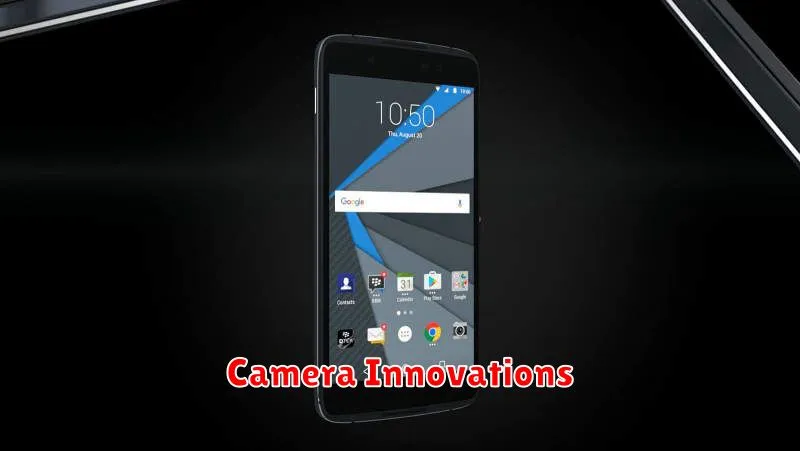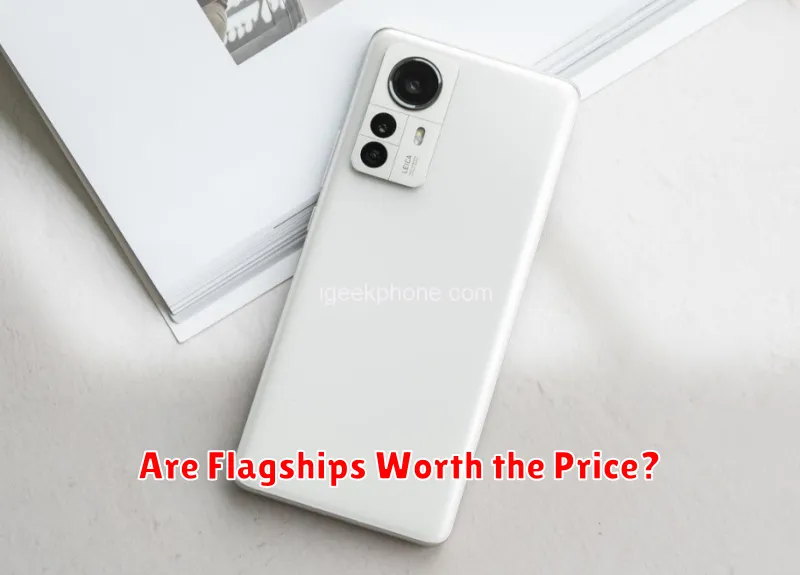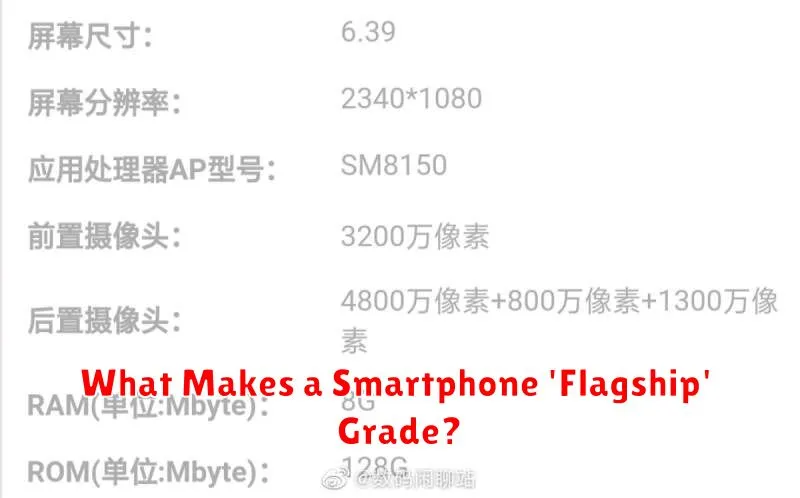In the ever-evolving world of mobile technology, the term “flagship smartphone” is frequently used to denote the pinnacle of innovation and performance. But what exactly elevates a device to this prestigious category? What distinguishes a flagship phone from its mid-range and budget-friendly counterparts? Understanding the key characteristics that define a flagship smartphone can empower consumers to make informed decisions when navigating the complex landscape of mobile devices. This article will delve into the essential elements that contribute to a phone’s flagship status.
From cutting-edge processors and stunning displays to advanced camera systems and premium build quality, flagship smartphones represent the best that manufacturers have to offer. This article will explore the defining features of these top-tier devices, examining the latest advancements in smartphone technology. By understanding the criteria that contribute to flagship status, you will be better equipped to determine if investing in a premium smartphone aligns with your needs and expectations.
Definition of Flagship Smartphones
Flagship smartphones represent the pinnacle of mobile technology offered by a particular manufacturer. They showcase the best features, highest-end components, and most advanced capabilities available at their time of release.
These devices are typically characterized by top-of-the-line processors, ample RAM, high-resolution displays, and cutting-edge camera systems. They often introduce new technologies and set the standard for other smartphones in the market.
Design and Build Quality
Flagship smartphones often distinguish themselves through superior design and build quality. This translates to the use of premium materials such as glass, metal, and ceramics. Beyond material choice, the precision of the construction is key. Tight tolerances, carefully considered ergonomics, and attention to detail all contribute to the overall impression of quality.
Flagship devices frequently feature innovative design elements, pushing the boundaries of what’s possible with smartphone form factors. This might include novel display implementations or unique camera placements.
Durability is another key consideration. Flagship phones are often built to withstand daily wear and tear, and many include enhanced water and dust resistance certifications.
Performance and Chipsets
A flagship smartphone’s performance hinges on its system-on-a-chip (SoC). These powerful chipsets boast cutting-edge CPU, GPU, and AI processing capabilities. Flagship devices typically feature the latest generation SoC from leading manufacturers, ensuring blazing-fast speeds, seamless multitasking, and smooth gaming experiences. This translates to a highly responsive and fluid user experience, free from lags or stutters, even when running demanding applications.
Beyond the raw processing power, flagship SoCs also prioritize power efficiency. Advanced fabrication processes minimize power consumption, contributing to longer battery life. This balance of performance and efficiency is a hallmark of a truly premium mobile experience.
Camera Innovations

Flagship smartphones often push the boundaries of mobile photography with cutting-edge camera technology. These innovations contribute significantly to the “flagship” designation.
Key advancements frequently include improved sensor size and sensitivity for superior low-light performance. Computational photography techniques, like advanced HDR and night mode processing, play a vital role in image quality.
Furthermore, flagship devices often feature specialized lenses, such as telephoto or periscope lenses for enhanced zoom capabilities, and ultrawide lenses for capturing broader perspectives. Optical image stabilization (OIS) is another common feature, minimizing blur caused by shaky hands.
Display Quality and Refresh Rate
A flagship smartphone’s display is expected to be top-tier. This encompasses several key factors. Resolution plays a vital role, with high pixel density (measured in pixels per inch or PPI) contributing to sharpness and clarity. Look for resolutions like QHD+ or higher for a truly premium experience.
Beyond resolution, display technology is crucial. OLED (Organic Light Emitting Diode) panels are often favored in flagships for their vibrant colors, deep blacks, and excellent contrast ratios compared to LCDs. HDR (High Dynamic Range) support further enhances the visual experience by expanding the range of colors and brightness levels.
Finally, refresh rate significantly impacts how smooth and responsive the display feels. A higher refresh rate, measured in Hertz (Hz), results in smoother scrolling and animations. Flagship devices commonly feature 90Hz, 120Hz, or even higher refresh rates, providing a noticeably more fluid user experience compared to the standard 60Hz.
Software Experience and Support
A flagship phone isn’t just about hardware; the software experience is crucial. Seamless performance, intuitive navigation, and a clean user interface are hallmarks of a premium device. This also includes the manufacturer’s skin or custom Android implementation, which should add value without bloat.
Long-term software support is another critical factor. Flagship phones are expected to receive major OS updates and security patches for a more extended period than mid-range or budget devices. This ensures the phone stays secure and up-to-date with the latest features.
Battery and Charging Tech
Flagship smartphones often distinguish themselves through advanced battery and charging technologies. Battery capacity tends to be larger, ensuring all-day or even multi-day usage. More importantly, these devices utilize power-efficient processors and software optimizations to maximize battery life.
Beyond capacity, fast charging is a key differentiator. Flagship phones boast incredibly high wattage charging, replenishing a significant percentage of battery in mere minutes. Furthermore, many incorporate wireless charging, and some even offer reverse wireless charging, allowing the phone to act as a power source for other devices.
Exclusive Features
Flagship smartphones often boast exclusive features not found in lower-tier models. These can significantly impact the user experience and contribute to the premium price tag.
One common area for exclusive features is the camera system. Flagships might include advanced sensors, specialized lenses (like periscope or macro lenses), and proprietary image processing algorithms for superior photo and video quality.
Display technology is another differentiator. Flagships may utilize cutting-edge screen technologies like high refresh rates, higher resolutions, and improved brightness or color accuracy.
Furthermore, exclusive software features, unique design elements, and premium materials (like ceramic or titanium) can further distinguish a flagship device.
Flagship vs Mid-Range Comparison
Understanding the distinctions between flagship and mid-range smartphones involves examining key specifications. Flagship devices represent the pinnacle of mobile technology, showcasing cutting-edge processors, advanced camera systems, and premium build materials. Mid-range phones, however, deliver a balance of performance and affordability, often incorporating some high-end features but with certain compromises.
A direct comparison reveals the core differences. Flagship phones typically boast the latest processors, ensuring the smoothest performance, while mid-range devices may utilize slightly older or less powerful chipsets. Camera technology is another key differentiator, with flagships offering superior image quality, advanced features, and versatile lens configurations.
Build quality also sets these categories apart. Flagships frequently employ premium materials like glass and metal, contributing to a more refined and durable design. Mid-range models may utilize more plastic components to achieve a lower price point.
Are Flagships Worth the Price?

The question of flagship phone value is complex. Premium prices often deliver cutting-edge technology, superior cameras, and enhanced performance. However, evaluating their worth depends on individual needs.
For users prioritizing the latest features and top-tier performance, flagships may be a justifiable expense. Those satisfied with good performance at a lower cost might find mid-range phones a more sensible investment.
Ultimately, deciding if a flagship is “worth it” requires weighing the cost against the added benefits and considering your individual usage patterns and expectations.

